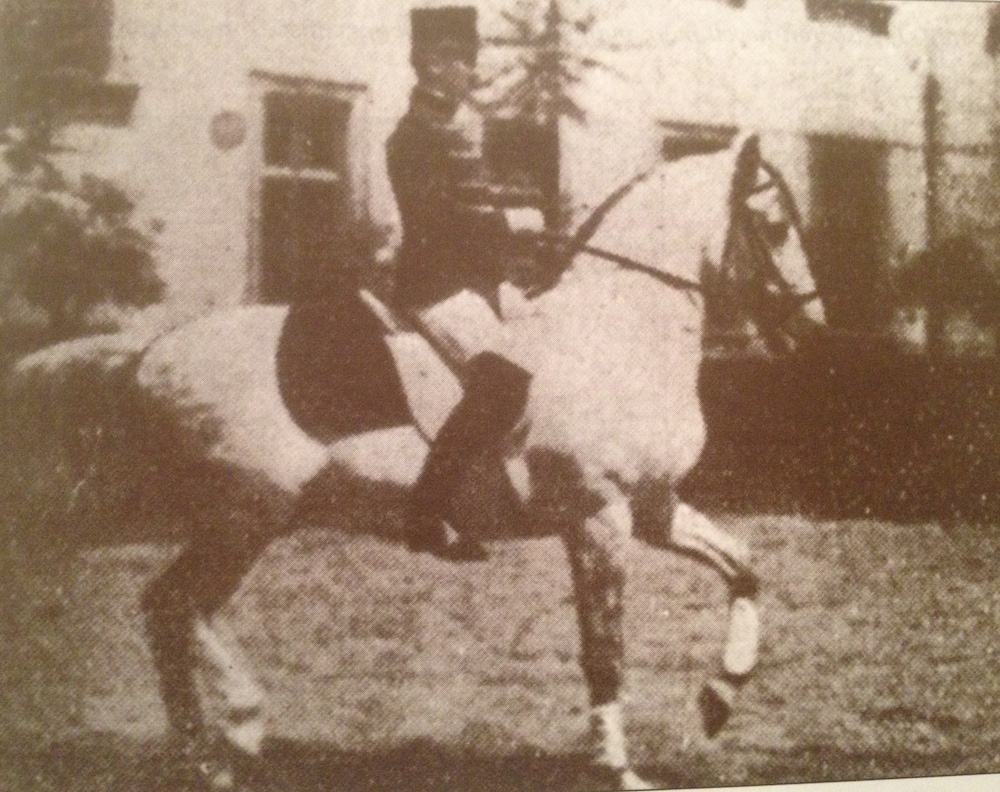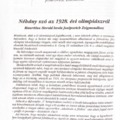
The old attraction of the Hungaro-Austrian cavalry, executed regularly, was the schoolwalk, however there are only a few who practice it in recent times. The masterly, so called school riding is based on school walk – it is its start and it is built around it.
To become master of horse training one has to understand and execute school riding, however achieving this level takes long years of practice. Max Weyrother’s is a well-known expression: “No one became the master of riding before his hair turns grey.” Despite their remarkable talent, the masters of riding, Pluvinel, Newcastle, La Gueriniere, Weyrother, Seeger Niedermayer, Fillis, Steinbrecht, Gebhardt, Speyer, Barcsák were all over 50 years old by the time they reached the level of mastery. I only spread their knowledge without adding anything to it.
The horse walks correctly if the weight of it and its rider falls equally on its diagonal legs and it steps into the hoof print of its first hoof with its hind. It has to move just as casually and smoothly with a rider as it would move without one.
The rider’s task is to bring and to keep the horse in a balanced position. This is done by adjusting the horse’s neck (Aufrichtung) and loading its hind legs. Lifting the neck helps the shoulders but holds back the movement of the hind legs. Its measure depends on the build of the horse. Lifting without the forward riding of the hind legs results the opposite of the original goal, additional weight falling onto the front legs. Only by the combination of lifting the neck and engaging the hind legs will the spine become horizontal.
The hind legs should be imagined as an elastic spring. Until they don’t have enough flexibility the horse is not able to walk rhythmically or step into the hoof prints of its first legs with its hinds.
Loading the hind legs is only possible when they are on the ground. Beyond that, the closer the hind legs are to each other the less they can extract themselves from the effect of the bending. Loading the weight of horse and rider onto the hind legs in walk and trot happens by the rider shifting more weight to his right pelvis and holding the right rein more when the horse lifts its left hind leg. When it lifts its right hind leg the rider’s left pelvis should be more loaded and the left rein held firmer. This is the half parade that requires advanced equestrian feeling and should be practiced only by experienced riders. If the half parade works then full parade (stop) should be easy.
This is where school riding beings. It does not only bring the horse into balance but also bends the joints of its hind legs, making its movement supple and light.
School riding is nothing else but perfecting and schooling the natural movement of the horse so it becomes able to move light and supple in every gait. By stretching the horse’s tendons and muscles, bending its joints, working its whole skeletal system and lightening the shoulders, school riding will lead to a roundishly arched action.
Half parade only work the hock while full parade bend the haunches. Its first step is the school-halt, that’s prerequisite is the school half parade. The horse, if it was asked to walk by aids of the rider’s thigh and reins from a school-halt, will start moving in a school walk. To achieve the school-halt the rider needs to have the combination of heavy thigh aids and soft hands. The combination of these results in having the horse on the bit: with other words, sending the energy of the hind legs forward to the bit with the thighs of rider and bringing it back from the hands onto the hind legs. School walk is an excellent exercise for the horse, making it able and flexible and preparing for the other school exercises. School walk is nothing less than half of a correctly executed piaffe. It is a requirement that the hooves leave the ground completely. While walk is a four beat gait, school walk is only two. In school walk the three joints of the hind leg are bent, the horse’s hip shifts deeper and its neck lifts up by itself.
Only with the help of the school walk can all forms of trot be developed, moreover it is the foundation of developing four and two beat canter. It also serves as the basic to correct halts, falcade and backing up. Furthermore, schooling the school walk results in the horse continuously engaging its back.
Although developing the school walk is a tiresome, nitty-gritty work to do and achieving it usually comes with many difficulties, it is the most grateful part of the training because it surely leads to success. It should be executed forwardly, on a straight line and in turns, during pirouettes, shoulder in and haunches in, on both hands.
Everyone, practice your school walk eagerly!

